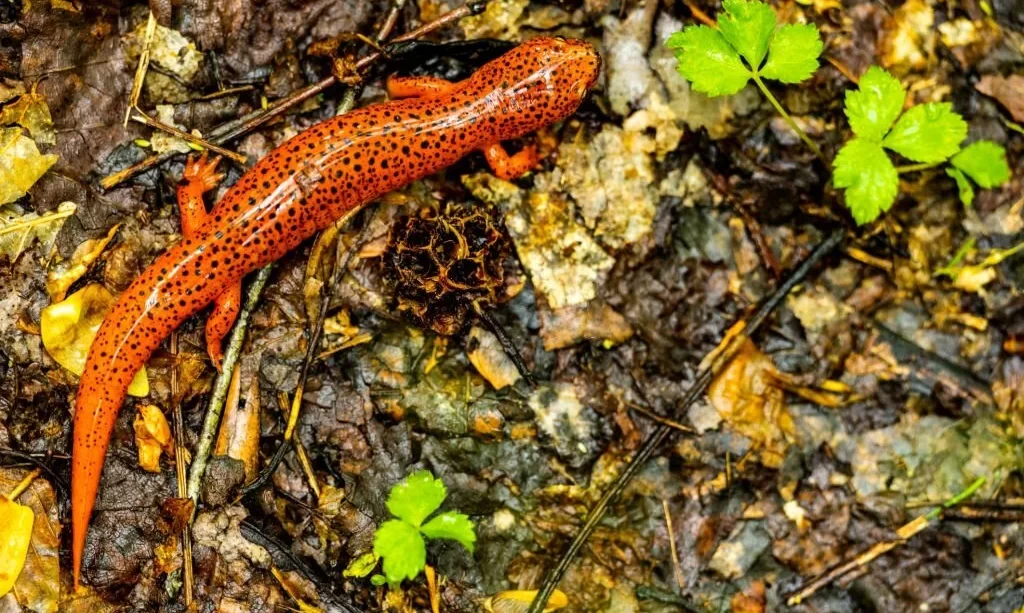Salamanders, those intriguing and secretive amphibians, are creatures of wonder. With their remarkable diversity and important ecological roles, they hold a unique place in the natural world. While they are typically celebrated for their contributions to healthy ecosystems, there are occasions when their presence may raise questions about responsible management. In this article, we delve into the realm of salamanders, exploring their significance in the world of amphibians and considering the need for mindful management in specific situations. Understanding these fascinating creatures and seeking harmonious coexistence is the key to addressing any potential challenges associated with their presence.
Salamanders
Salamanders, a diverse group of amphibians, are known for their distinctive features and crucial ecological roles. Here’s a closer look at these remarkable creatures:
- Physical Characteristics: Salamanders are characterized by their sleek, elongated bodies and moist, smooth skin. They lack scales and are typically recognizable by their short legs and long tails. Their vibrant colors and patterns can vary significantly between species.
- Behavior and Habitat: Salamanders are predominantly terrestrial or aquatic, depending on their species and life stage. They are often found near water bodies like ponds, streams, and wetlands, which provide the necessary moisture for their skin.
- Role in Ecosystems: These amphibians play vital roles in ecosystems. As both predator and prey, they help maintain balance in food chains by controlling insect populations and serving as a food source for larger animals.
- Indicator Species: Salamanders are often considered indicator species, which means that their presence (or absence) can reflect the health of an ecosystem. They are particularly sensitive to environmental changes, making them valuable indicators of habitat quality.
- Conservation Status: While many salamander species are thriving, some are threatened by habitat loss, pollution, and disease. Their conservation is essential to maintaining biodiversity.
Understanding the biology, behavior, and ecological significance of salamanders is fundamental to coexisting with these creatures and addressing any potential management concerns that may arise in specific situations.
Assessing the Need for Management
Before embarking on any management strategies for salamanders, it’s crucial to assess whether management is genuinely necessary in your specific situation. Consider the following factors:
- Location and Context: Where are the salamanders causing issues? Are they inside homes, around pools, or in gardens? Understanding the context and extent of their presence is essential.
- Frequency and Impact: How often do salamanders cause problems, and how significant are those issues? Occasional encounters may not warrant management, while persistent and impactful presence might.
- Human Activities: Assess the impact of salamanders on human safety, health, and comfort. Consider situations where their presence may pose potential hazards or disruptions to daily life.
Non-Lethal Methods for Salamander Management
If the need for salamander management is established, it’s important to focus on non-lethal and humane methods. Here are several strategies for managing salamanders while preserving their well-being and ecological significance:
- Physical Barriers: To prevent salamanders from entering homes or specific areas, consider installing screens on windows and doors. These screens allow for airflow while keeping salamanders outside.
- Habitat Modification: To make areas less attractive to salamanders, address factors that may draw them in. This can include reducing outdoor lighting near water sources, closing gaps in structures, or removing debris piles.
- Safe Relocation: If salamanders are found indoors, use gentle techniques to safely relocate them outside. Capture them carefully and release them in a suitable habitat, ensuring they have access to moisture.
It’s important to remember that harming or killing salamanders is generally not an ethical or effective solution and should be avoided. The focus should be on finding responsible and humane ways to address any issues that may arise due to their presence while recognizing their ecological value and preserving their well-being.
Legal and Ethical Considerations
When managing salamanders, it’s crucial to adhere to legal and ethical considerations. These include:
- Local Regulations: Research and adhere to any local laws and regulations regarding the treatment of salamanders. In some regions, specific species may be protected, and there may be guidelines for their humane management.
- Ethical Treatment: Recognize that harming or killing salamanders is generally not an ethical or effective solution. Ethical considerations should guide all management efforts, with a focus on peaceful coexistence and humane practices.
Coexistence and Education
Promoting coexistence and understanding the value of salamanders is essential. This involves:
- Respect for Nature: Encourage respect for the natural world and its inhabitants, including salamanders. Recognize their role as indicators of environmental health and their contributions to ecosystem balance.
- Community Involvement: Engage with your community to collectively address any concerns related to salamanders. This can involve education and awareness programs, as well as cooperative efforts to manage salamander-human interactions.
- Education: Educate the public about the behavior and ecological importance of salamanders. Understanding their role in ecosystems can foster empathy and appreciation, leading to more harmonious coexistence.
Conclusion
Salamanders, with their unique characteristics and ecological significance, are creatures of great value in our natural world. While they are essential contributors to healthy ecosystems, there may be times when responsible management is required to address potential issues in specific settings. Understanding their biology, assessing the need for management, and implementing non-lethal and ethical methods can help strike a balance between the presence of these fascinating amphibians and human activities.
In the spirit of coexistence, it is crucial to respect legal and ethical considerations, preserving the well-being of salamanders and the harmonious relationship between nature and human communities. Ultimately, a thoughtful and balanced approach ensures that we can continue to appreciate and coexist with these unique creatures, acknowledging their ecological importance and the significance of living in harmony with the natural world.



